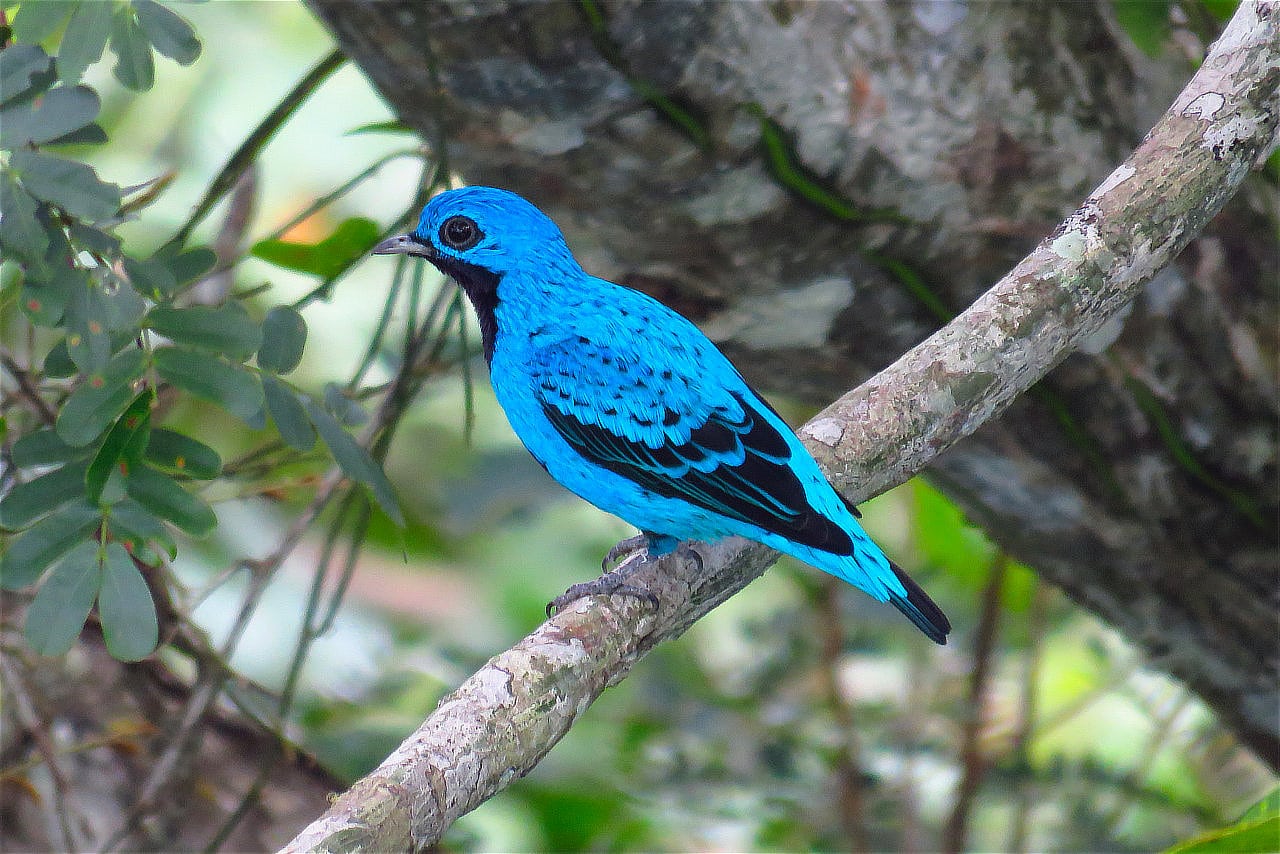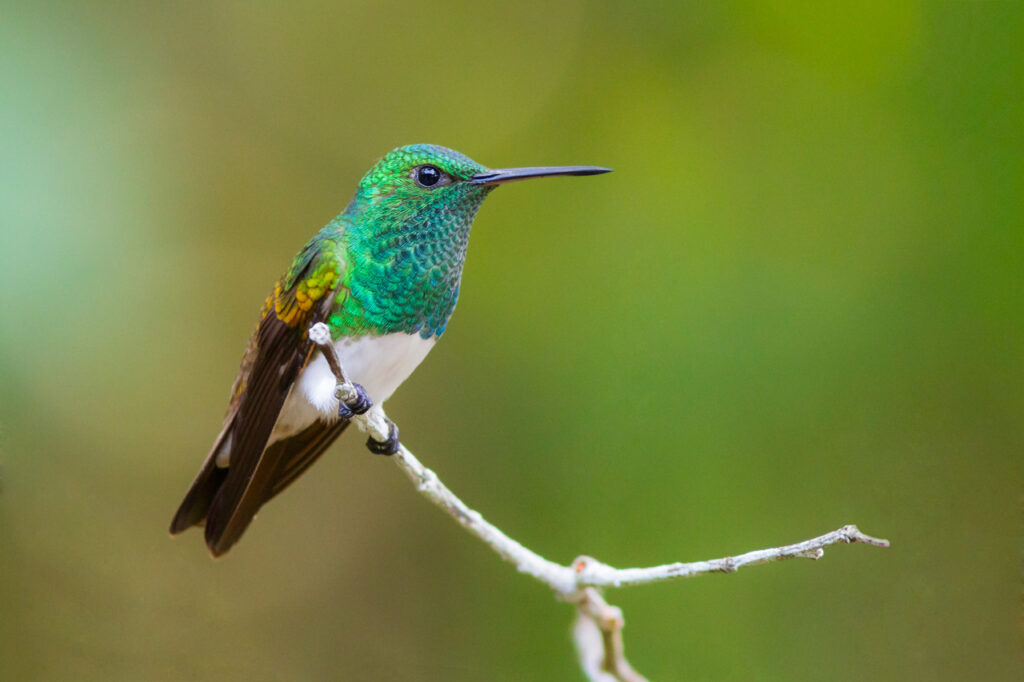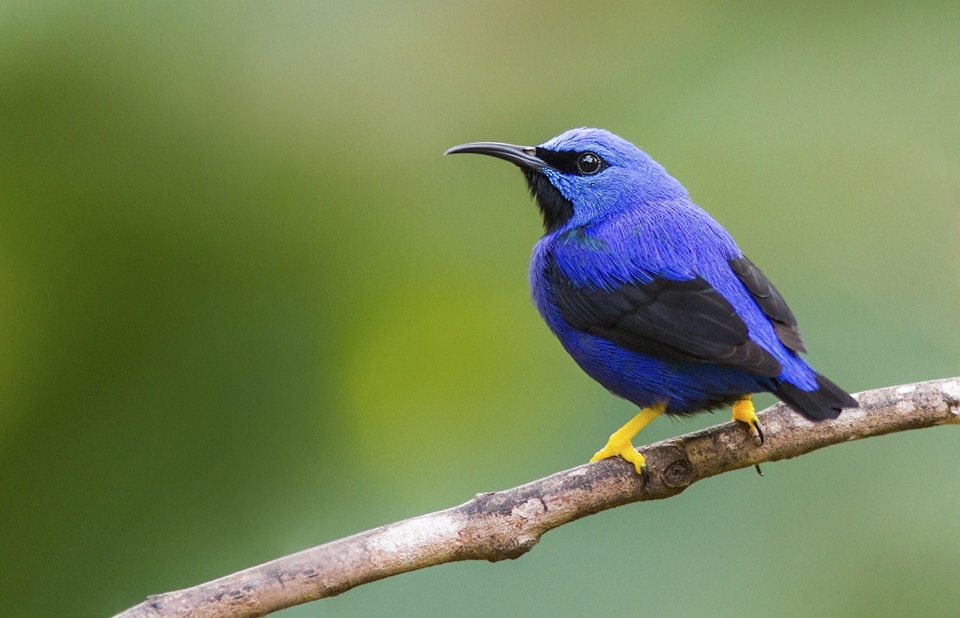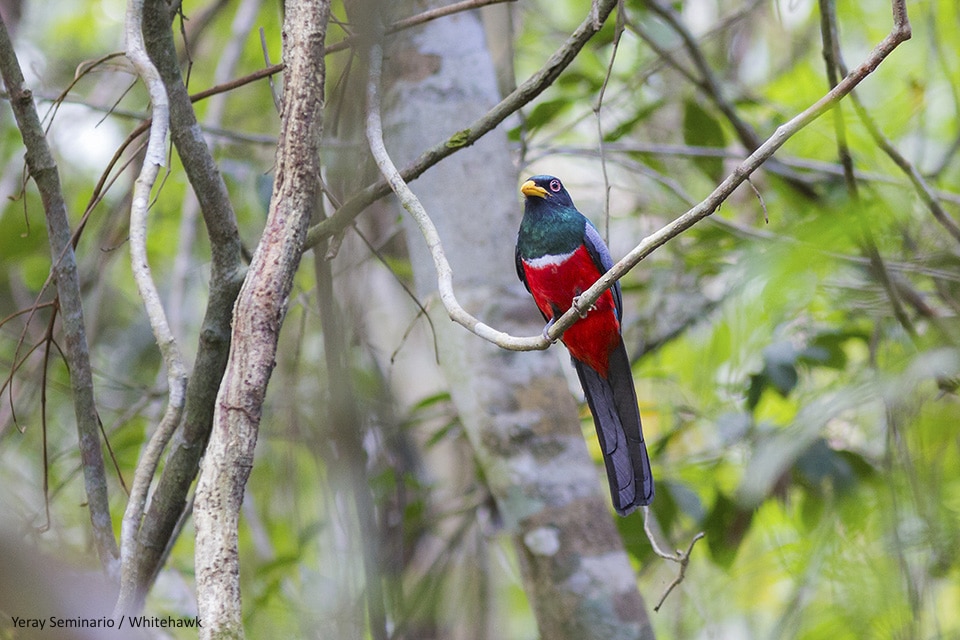
Panama: Birds of the Panama Canal
- Next tour dates October 4-11, 2025
- Duration 8 days
- Lodging 3-4 stars
- Difficulty Easy to Moderate
- Group size Max. 8 people
- Price USD $TBD per person*
Overview
The Panama Canal is located in the center of one of the world’s most biologically diverse areas and is surrounded by a substantial stretch of protected areas within the Panama Canal watershed. Here, close to two-thirds of the more than one thousand bird species registered in the country can be found. This Panama bird watching tour around this famous waterway focuses on the fantastic avifauna found here!
Though the inter-oceanic route of the Panama Canal is what makes it most famous, there is much more to this watershed than meets the eye. It extends from the highest elevations of the surrounding hills and mountains and is traversed by a forest corridor from the mangroves and dry forests on the Pacific slope to the wetter Caribbean slope forests. And, nestled in the middle of all this, is the gorgeous Gatun Lake, home to a number of aquatic birds, as well as mammals, reptiles, and amphibians.
In eight days we will visit both coasts, as we traverse through different landscapes in search of the more than 650 birds that live around the Panama Canal zone.

Itinerary
DAY 1: ARRIVAL
We will meet you upon your arrival to Tocumen International Airport (PTY), Panama City, Panama for transfer to your hotel. There will be time to check in and relax before a short orientation and our first dinner together.
DAY 2: CERRO AZUL
Today we being our Panama bird watching tour by visiting the upper basin (~2,800ft) of the Chagres River – the largest river in the Panama Canal watershed, along the boundaries of Chagres National Park. The gated community of Cerro Azul is the ideal place to find the endemic Stripe-cheeked Woodpecker. In addition, we will focus on finding Yellow-eared Toucanet, Blue Cotinga, Black-and-yellow Tanager, Tawny-capped Euphonia, and White-ruffed Manakin, among many other species.
We will also visit some private gardens with bird feeders which will give us a great chance to see Rufous-crested Coquette, Violet-capped Hummingbird, Violet-headed Hummingbird, Snowy-bellied Hummingbird, Shining Honeycreeper, and Rufous Motmot.

DAY 3: METROPOLITAN NATURAL PARK & BAY OF PANAMA
Our journey across the Isthmus will focus on the Pacific Ocean side. This morning, we will visit the Panama Bay to explore the shores and mangrove forests in the area. At low tide we will visit the mudflats of the Old Panama City Ruins to enjoy the spectacular wintering concentration of shorebirds like Collared Plovers, Short-billed Dowitchers, Marbled Godwit, Whimbrel and others.
We will continue our birding a the Embarcadero de Juan Diaz. The mangroves here provide habitat for some important species including Straight-billed Woodcreeper, Ruddy-breasted Seedeater, Northern Scrub-Flycatcher, Common Black Hawk (Mangrove), Yellow Warbler (Mangrove), Sapphire-throated and Scaly-breasted Hummingbirds, Black-necked Stilt, Least Sandpiper, and Cocoi Heron among others.
We will then visit Metropolitan Natural Park, a surprisingly productive Panama bird watching site. It is the only tropical forest in Latin America located within city limits. Here, we will be on the lookout for more Panama City birds such as: Lance-tailed Manakin, Yellow-green Tyrannulet, Rosy Thrush-Tanager, Crested Caracara, Yellow-crowned Parrot, Yellow Tyrannulet, and Red-crowned Ant-Tanager.
To end the day, as time permits, we will ascend the highest point of Panama City – Ancon Hill. Ancon was also the name of the first official ship to transit the Canal. From the top of this mountain that overlooks the city and the Canal, one can enjoy a panoramic view of the entire Bay of Panama.
DAY 4: SOBERANIA NATIONAL PARK
The world-famous birding route, Pipeline Road, is located where the Chagres River and Gatun Lake meet. During World War II an oil pipeline was built to transfer fuel from one ocean to the other in case the Panama Canal was ever attacked. The Canal was never assaulted and today the preserved road is an easily accessible path that leads into the heart of a Neotropical forest. Pipeline is well known for its trogons – five of them can be seen on a very lucky day: Slaty-tailed Trogon, Gartered and Black-throated are the most common.

We will be alert for a melancholy sound emanating from the forest floor, letting us know that Streak-chested Antpitta is nearby. We will also search on the ground or on very low perches, for army ant-followers such as Ocellated Antbird, Bicolored Antbird, Chestnut-backed Antbird and, if we are very lucky, the prized Rufous-vented Ground-Cuckoo! Today will surely be a highlight of our Birds of the Panama Canal tour.
DAY 5: SAN LORENZO PROTECTED AREA & ACHIOTE ROAD
Today we get an early start as we travel to the Caribbean Sea, at the other end of the Panama Canal. We will explore the forest around the mouth of the Chagres River in the Protected Area of San Lorenzo – one of the best birding sites is Achiote Road, where we will search for the regional endemics found only in Panama and Colombia – the Spot-crowned Barbet and White-headed Wren. We will also look for Black-tailed Trogon, Pacific Antwren, Slate-headed Tody-Flycatcher, and Bare-crowned Antbird. To end the day, we visit the Ruins of San Lorenzo Fort which was built to protect the mouth of the Chagres River during the Spanish Empire between the 17th and 18thcenturies.
DAY 6: PANAMA RAINFOREST DISCOVERY CENTER, SUMMIT POND & PLANTATION TRAIL
Today we return to Pipeline Road early this morning for a stop at the Panama Rainforest Discovery Center. Here we climb the tower to get a “birds-eye-view” of the rainforest and perhaps a peak at ships passing through the Canal. We will also visit the area’s hummingbird feeders to see some of the buzzing visitors, such as Violet-bellied Hummingbird, Blue-chested Hummingbird, Crowned Woodnymph, Long-billed Hermit and many others. This will provide us with an amazing Panama bird watching experience! In the afternoon, after our lunch and a pleasant rest, we will visit the Summit Pond and Plantation Trail to seek for Boat-billed Heron, American Pygmy Kingfisher, Rosy Thrush-Tanager, Jet Antbird and Pale-eyed Pygmy-Tyrant.
DAY 7: ALTOS DE CAMPANA NATIONAL PARK & MIRAFLORES VISITOR CENTER
In the most western part of the Panama Canal watershed is the Altos de Campana National Park and the headwaters of a tributary of the basin, the Trinidad River. We will explore the area’s trails as we search for some Central American endemics such as Stripe-breasted Wren, Orange-bellied Trogon and Black-crowned Antpitta. On top of this, we will get to enjoy the magnificent landscapes of this region. Around noon we will head back to our hotel for a quick rest before gaining first-hand experience of the Panama Canal’s operation and history during our visit to the Miraflores Visitor Center.

DAY 8: GATUN LAKE & DEPARTURE
Today we will visit Gatun Lake – the last major part of the Panama Canal on our tour. Encompassing more than 40% of the waterway and the most important water reservoir for the canal’s operation, Gatun Lake is probably the most picturesque place on this famous waterway. Exploring the lake by boat, we will search for some aquatic species such as Limpkin, Wattled Jacana, Purple Gallinule, Snail Kite, and Pied-billed Grebe among others. In the lake, we may also have a chance to get up close to enormous container ships and intricate sailboats in transit through the canal. We will return to our hotel to enjoy our last lunch together. We will check-out of the hotel and transfer to Tocumen Internal Airport, where our Panama bird watching tour will conclude.
Species
BIRDS
- Great Tinamou
- Gray-headed Chachalaca
- Squirrel Cuckoo
- Pheasant Cuckoo
- Rufous-crested Coquette
- Scaly-breasted Hummingbird
- Garden Emerald
- Snowy-bellied Hummingbird
- Violet-capped Hummingbird
- White-throated Crake
- Southern Lapwing
- Wood Stork
- Magnificent Frigatebird
- Rufescent Tiger-Heron
- Black Hawk-Eagle
- Semiplumbeous Hawk
- Crane Hawk
- Slaty-tailed Trogon
- White-tailed Trogon
- Whooping Motmot
- American Pygmy Kingfisher
- White-necked Puffbird
- Great Jacamar
- Spot-crowned Barbet
- Yellow-eared Toucanet
- Black-cheeked Woodpecker
- Stripe-cheeked Woodpecker (endemic)
- Cinnamon Woodpecker
- Crimson-crested Woodpecker
- Laughing Falcon
- Blue-headed Parrot
- Mealy Parrot
- Fasciated Antshrike
- Moustached Antwren
- Pacific Antwren
- Jet Antbird
- Ocellated Antbird
- Black-crowned Antpitta
- Streak-chested Antpitta
- Black-faced Antthrush
- Black-striped Woodcreeper
- Straight-billed Woodcreeper
- Lance-tailed Manakin
- Golden-collared Manakin
- Purple-throated Fruitcrow
- Blue Cotinga
- Russet-winged Schiffornis
- Speckled Mourner
- Golden-crowned Spadebill
- Yellow-green Tyrannulet (endemic)
- Southern Bentbill
- Black-headed Tody-Flycatcher
- Brownish Twistwing
- Lesser Kiskadee
- Scrub Greenlet
- Green Shrike-Vireo
- Mangrove Swallow
- White-headed Wren
- Stripe-breasted Wren
- Fulvous-vented Euphonia
- Tawny-capped Euphonia
- Rosy Thrush-Tanager
- Orange-billed Sparrow
- Scarlet-rumped Cacique
- Red-throated Ant-Tanager
- Speckled Tanager
- Rufous-winged Tanager
- Black-and-yellow Tanager
- Shining Honeycreeper
- Slate-colored Grosbeak
TOUR BASICS
Guide: Edwin Campbell
Single Supplement: US$415
Lodging: Comfortable and clean hotels and inns
Food: Quality, fresh, local ingredients prepared in Panamanian and International styles
Weather: A humid climate in all areas. Temperature varies according to elevation, cold in the high area and warm in the lower elevations.
Difficulty: Easy to Moderate. Most days will include a fair amount of walking within undulating terrain.
*For more information on what is included/not included, as well as our booking and cancellation policies, please review our Terms & Conditions.
* Pricing based on group of 4 people. With smaller groups, an additional fee will be charged.
LEARN MORE
Upcoming tour dates:
October 5-12, 2024
October 4-11, 2025
October 3-10, 2026
From our blog:
Birding the Panama Canal
Top 10 Reasons to Travel to Panama
Bird Migration in Panama
